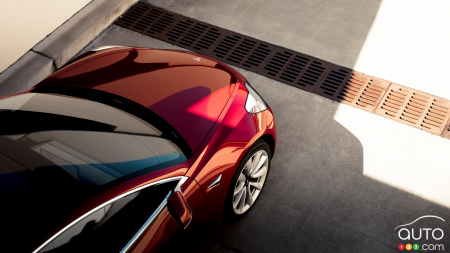The past few months have seen Tesla making the deadlines seemingly on a daily basis. Elon Musk, a master of communication in the modern age, is adept at getting the attention of contemporary media. Any news is good news, as the saying goes…
Over the past few weeks, much coverage has been devoted to issues surrounding the Model 3 and the company’s finances. The latter have been the subject of much speculation, but if there’s one thing we’ve learned about Elon Musk, is that he knows how to generate new revenue. As for the Model 3, much has been said about the production delays that have bedeviled it. The company is still trying to attain the weekly production targets it set for itself – a key step to achieving profitability.
There has also been some stinging criticism regarding uneven quality of construction for the Model 3.
This week, yet another rock flew straight at Tesla’s windshield. Consumer Reports decided that it cannot recommend the Model 3.
In context, this type of decision is certainly significant, but it is also reversible. In fact, the non-recommendation arises mainly from one hiccup: the model performed atrociously during braking tests.
In testing carried out by Consumer Reports on more than one Model 3 vehicle, braking distance was measured as very long and unacceptable. The magazine noted in its report that the Tesla took seven additional feet to come to a stop from 60 mph (96 km/h) than the Ford F-150.
Specifically, the 60-to-0-mph deceleration took 152 feet. According to Tesla, it should be 133 feet.

The very first test carried out by Consumer Report did see the car perform in accordance with Tesla’s figures, coming to a stop in 130 feet. The problem arose with subsequent go-rounds, as each one required a greater distance to stop, even though the testers left time for the brakes to cool.
A private individual’s own Model 3 was even called into service, to see if the results would be any different; they were not.
A Tesla representative said that the company could implement an update of the braking system, one that would touch specifically on the modules that control the anti-lock feature. The right calibration of this system can make a significant difference to reduce wheel slip without unduly reducing brake pressure.
On a more positive note, the experts at Consumer Reports did commend the road handling of the Model 3, even comparing it favourably with that of the Porsche 917 Boxster. They were also able to set a new record for range on a single charge, squeezing 350 miles (580 km) out of the battery system before recharging was required.
There’s no doubt there have been some real bumps on the road in the early existence of the Tesla Model 3, but it seems realistic to think that it will eventually be able to meet expectations.



